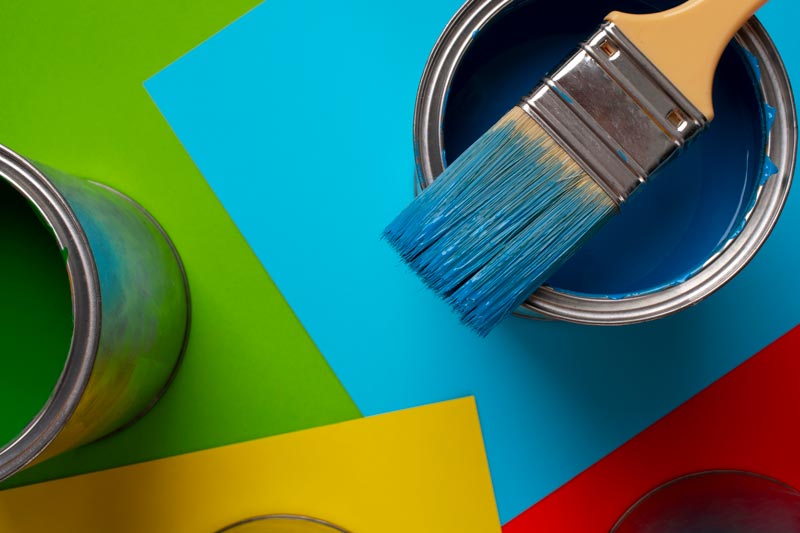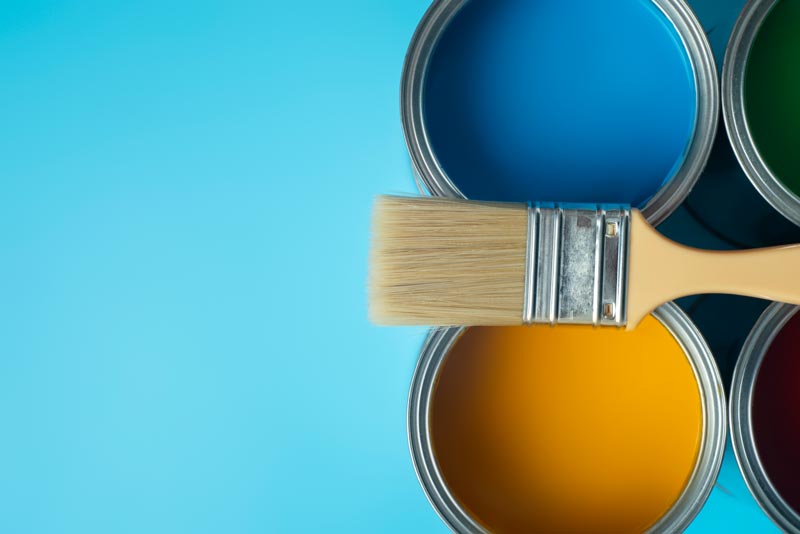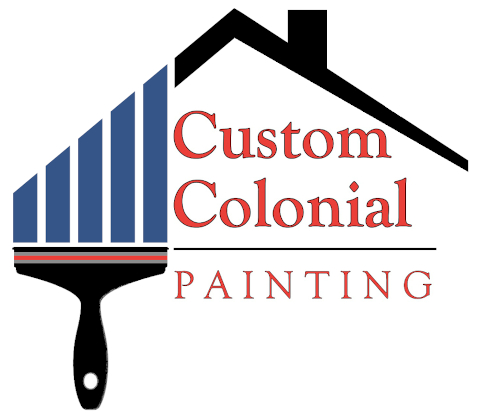Choosing the right color palette for your home can be exciting and daunting. Colors are vital in your home since they can subconsciously affect your mood and behavior. Expert interior painters in Westport, CT, emphasize that a well-chosen color scheme can transform your home, making it more inviting and visually appealing.
This article provides insights from professional interior painters on selecting the perfect color palette for your home.
How to Choose the Perfect Color Palette for Your Home in 2024
1. Understand Color Theory
Color Basics
To begin, understanding the basics of color theory is essential. Interior painters in Westport, CT, frequently use this knowledge to create balanced and harmonious color schemes for homes. Here are the classifications of colors:
- Primary Colors: Red, blue, and yellow are the foundation of all other colors. They cannot be created by mixing other colors
- Secondary Colors: Green, orange, and purple are formed by mixing two primary colors
- Tertiary Colors: These result from mixing primary and secondary colors. Examples include red-orange, yellow-green, and blue-purple. These colors add depth and complexity to color schemes.
Color Wheel
The color wheel is a circular diagram that shows the relationships between different colors. Interior painters use the color wheel to select and combine colors effectively. Here are some key concepts:
- Complementary Colors: These are opposite on the color wheel, such as blue and orange. When used together, they create a vibrant look with high contrast. Interior painters in Westport, CT, often use complementary colors to make elements stand out.
- Analogous Colors: These are next to each other on the color wheel, like blue, blue-green, and green. They usually match well and create serene, comfortable designs. Analogous colors are ideal for creating a soothing environment.
- Triadic Colors: These are evenly spaced around the color wheel, such as red, yellow, and blue. They offer a balanced and vibrant palette. Triadic schemes are excellent for achieving a playful and dynamic look.
Color Harmonies
Understanding color harmonies is crucial in choosing a palette that works well together. Interior painters in Westport, CT, often utilize these harmonies to achieve specific effects:
Complementary Harmonies
- Create High Contrast and Draw Attention: Complementary colors, like red and green or blue and orange, stand out sharply against each other. This high contrast makes them excellent for drawing attention to specific areas or elements in a room.
- Valid for Accent Walls or Focal Points: These harmonies are ideal for accent walls, which aim to create a striking feature that captures the eye. For example, a bright blue wall in a room with predominantly orange décor can serve as an eye-catching focal point.
- Dynamic and Energetic Feel: The contrast between complementary colors can create a lively and dynamic atmosphere, making spaces feel more energetic and stimulating.
Analogous Harmonies
- Provide a More Cohesive and Calming Effect: Analogous colors, such as blue, blue-green, and green, blend seamlessly. This creates a more cohesive and harmonious look, as the colors naturally complement one another.
- Great for Creating a Relaxed Atmosphere: These harmonies are perfect for spaces where a calm and serene environment is desired, such as bedrooms, living rooms, or meditation areas. The smooth transition between colors can help promote relaxation and tranquility.
- Natural and Balanced Look: Because analogous colors are often found together in nature, they can make a room feel balanced and organic. Interior painters in Westport, CT, often use these schemes to evoke natural, soothing environments.
Triadic Harmonies
- Add a Balanced and Playful Touch: Triadic color schemes involving three colors evenly spaced around the color wheel offer a vibrant yet balanced palette. For instance, red, yellow, and blue create a harmonious yet lively combination.
- Ideal for Vibrant and Dynamic Spaces: These harmonies are perfect for areas where a playful and dynamic feel is desired, such as playrooms, kitchens, or children’s bedrooms. The variety of colors can stimulate creativity and energy.
- Versatile and Engaging: Triadic schemes allow for great flexibility and creativity. By adjusting the saturation and brightness of each color, interior painters can create a wide range of looks, from bold and vibrant to soft and subtle.
2. Assess Your Space and Lighting
Natural Light
Natural light significantly impacts how colors appear in your home. It can also impact your health since exposure to light during the evening can negatively alter your circadian rhythm, leading to disrupted sleep patterns and potential health problems.
The quality and direction of natural light change throughout the day, altering the perception of colors. Here are key points to consider:
Direction of Light
- North-Facing Rooms: These rooms receive cooler, indirect light, making colors appear slightly muted and cooler. Interior painters often recommend warm tones to balance the cool light.
- South-Facing Rooms: These rooms get warm, direct light throughout the day, intensifying colors. Bright and bold colors work well here, as they won’t be washed out by the light.
- East-Facing Rooms: Morning light in these rooms is bright and warm, while afternoon light is cooler. Interior painters suggest using warm colors to complement the morning light.
- West-facing rooms: These rooms have cooler morning light and warm, intense afternoon light. Softer, cooler colors can help balance the strong afternoon light.
Changing Light Conditions
- Observe how the light shifts in each room throughout the day. Colors can look vastly different in morning light compared to afternoon or evening light.
- Interior painters recommend testing paint samples on different walls to see how they appear at various times.
Artificial Lighting
Artificial lighting also plays a crucial role in color perception. Different types of bulbs can alter how colors look:
Types of Bulbs
- Incandescent Bulbs: Emit a warm, yellowish light that enhances warm colors but can make cool colors look dull.
- Fluorescent Bulbs: Provide a cooler, bluish light to make warm colors look more muted and cool colors appear brighter.
- LED Bulbs: LED bulbs are available in various color temperatures, from warm to cool. Interior painters suggest choosing bulbs that match the desired ambiance of the room.
Lighting Placement
- Ceiling lights, floor lamps, and wall sconces can create different lighting effects. Test paint samples under each type of lighting to ensure the colors look consistent and appealing.
- In Westport, CT, homes often use a mix of lighting to achieve the perfect ambiance, and interior painters recommend considering all light sources when selecting paint colors.
Room Size and Purpose
The size and purpose of a room significantly influence color choices. Here’s how:
Room Size
- Small Rooms: Lighter colors can make small rooms feel more spacious and open. Interior painters suggest using whites, pastels, and light neutrals to create the illusion of a larger space.
- Large Rooms: Darker colors can add coziness and intimacy to large rooms. Deep blues, rich greens, and warm browns make expansive spaces more inviting.
Room Purpose
- Bedrooms: Calm and soothing colors are ideal for creating a relaxing atmosphere. Soft blues, greens, and muted neutrals are popular choices.
- Living Rooms: Vibrant shades can energize the space and make it more welcoming. Interior painters in Westport, CT, recommend using colors like warm yellows, lively greens, or bold accent walls.
- Kitchens: Bright and cheerful colors can invigorate the space where you spend a lot of time. Consider using fresh yellows, crisp whites, or soft blues.
3. Find Inspiration
Nature and Outdoors
Nature is a fantastic source of inspiration for your home’s color palette. The changing seasons, landscapes, and gardens can provide color ideas. Interior painters in Westport, CT, often draw inspiration from the area’s natural surroundings to create harmonious and inviting color schemes.
Existing Décor and Furnishings
Your current décor and furnishings are excellent starting points for choosing a color palette. Interior painters recommend taking cues from the colors in your furniture, artwork, and accessories. This ensures that the new color scheme will complement your existing items and create a cohesive look.
Magazines and Online Resources
Design magazines, websites, and social media platforms are valuable resources for color inspiration. Platforms like Pinterest and Instagram showcase various color schemes and trends. Interior painters in Westport, CT, suggest creating mood boards with your favorite color combinations to visualize how they will look in your home.

4. Choose a Dominant Color
Creating a Focal Point
The dominant color in your palette sets the tone for the entire room. Interior painters recommend selecting a color that creates a focal point and draws attention. In Westport, CT, popular choices include shades of blue for a calming effect or warm tones like terracotta for a cozy and inviting atmosphere.
Balancing Bold and Neutral Colors
Balancing bold and neutral colors is essential for creating a harmonious look. Interior painters suggest using a bold color as the dominant hue and pairing it with neutral tones to prevent the space from feeling overwhelming. In Westport, CT, homeowners often opt for bold colors like navy or emerald green, balanced with neutrals like beige or gray.
Expert Tips
Professional interior painters offer valuable tips for selecting the right dominant color. They recommend considering the room’s size, lighting, and purpose. Additionally, they suggest testing paint samples on the walls and observing them at different times of the day to ensure the chosen color works well in various lighting conditions.
5. Select Accent Colors
Supporting Colors
Accent colors play a supporting role in your color scheme. They add depth and interest without overpowering the dominant color. Interior painters in Westport, CT, recommend selecting accent colors that complement the dominant hue and enhance the room’s overall look.
- Complementary Selection: Choose accent colors that complement the dominant hue to create harmony. For example, if your dominant color is a soft beige, consider using navy or emerald green as accents to add richness without overwhelming the space.
- Enhancing the Room: Use accent colors to highlight architectural features or focal points, such as a fireplace or an accent wall. This draws attention to specific areas and enhances the room’s overall look.
Using the 60-30-10 Rule
The 60-30-10 rule is a guideline for balancing colors in a room. It suggests the following things:
- 60% Dominant Color: This color covers most of the space, usually the walls and large furniture pieces. Interior painters in Westport, CT, often recommend neutral or subdued shades for this portion to create a versatile base.
- 30% Secondary Color: This color is used for upholstery, curtains, or rugs. It should complement the dominant color and add more visual interest without overpowering the space.
- 10% Accent Color: This boldest color is used sparingly. Think of throw pillows, artwork, and decorative accessories. This pop of color should create contrast and draw the eye.
Coordination and Contrast
Choosing accent colors involves finding the right balance between coordination and contrast:
- Coordination: Accent colors should coordinate with the dominant color to maintain a cohesive look. Interior painters suggest using the color wheel to find analogous colors next to each other for a harmonious effect.
- Contrast: To add excitement and interest, use accent colors that contrast with the dominant color. For example, if your dominant color is a cool blue, warm accent colors like coral or mustard can create a striking and dynamic contrast. Interior painters in Westport, CT, find this approach makes the room more vibrant and visually engaging.

6. Test and Sampling Colors
Paint Samples
Testing paint samples is a crucial step in choosing the perfect color palette. Interior painters recommend applying paint samples to the walls and observing them over a few days. This step in Westport, CT, where lighting conditions can change dramatically, ensures you make an informed decision.
Observing Colors at Different Times
Colors can look different at various times of the day. Interior painters advise observing paint samples in the morning, afternoon, and evening to see how they change under different lighting conditions. This helps ensure the chosen colors look good throughout the day.
Avoiding Common Mistakes
Common mistakes in choosing paint colors include not testing samples and relying solely on paint chips. Interior painters in Westport, CT, emphasize the importance of testing samples on the walls and observing them in different lighting to avoid disappointment.
7. Considering Trends and Personal Style
Current Trends
Awareness of current color trends can help you choose a modern and stylish palette. Interior painters in Westport, CT, recommend incorporating trends that align with your style to create a timeless look. Popular trends include earthy tones, muted pastels, and bold jewel tones.
Personal Preference
Balancing trends with personal preference is essential for creating a space that feels like home. Interior painters suggest choosing colors that resonate with you and reflect your personality. In Westport, CT, homeowners often blend trending colors with classic hues to achieve a unique and personal look.
Expert Insights
Interior painters provide valuable insights into blending trends with personal style. They recommend selecting a few trending colors and incorporating them into your palette while ensuring the overall look remains cohesive and true to your taste.

Frequently Asked Questions
How do I coordinate colors between open-plan spaces?
For open-plan spaces, it’s essential to maintain a cohesive color flow. Choose a primary color and use complementary shades to create distinct areas without disrupting the harmony. Repeating accent colors and patterns can help tie the spaces together.
Can I use different color schemes in different rooms?
Different color schemes can be used in different rooms, but they should complement each other. Interior painters recommend maintaining a cohesive flow by using variations of the same colors or ensuring the schemes harmonize well.
Should I follow current color trends or stick with classic colors?
Balancing trends with classic colors ensures a timeless look. Interior painters recommend incorporating trends that resonate with your style while maintaining a foundation of classic hues. In Westport, CT, this approach creates a stylish yet enduring aesthetic.
Should you paint the living room and kitchen the same color?
The colors in the kitchen should flow into the living room to ensure a smooth transition throughout the home. While the design doesn’t need to be identical, incorporating connections like using an accent color or repeating a pattern can establish a sense of harmony and continuity in the overall design.
What color wall paint goes with everything?
Neutral tones such as earthy grays, easy-going beiges, and fresh whites set the stage for any decor you bring home. These neutral colors partner beautifully with feature walls and work well in any color palette, making them versatile choices for any room.
Transform Your Home with Custom Colonial Painting
Is your home in need of a fresh look? Transform it with the expert services of Custom Colonial Painting in Westport, CT. Our professional interior painters use tested techniques to handle everything from common spills to delicate antique surfaces, ensuring your home looks and feels as good as new.
Custom Colonial Painting offers a wide range of services, including interior and exterior painting, color consultation, and surface preparation. Our interior painters are skilled in various painting techniques, ensuring high-quality results tailored to your needs.

![[2024 Update] How to Choose the Best Color Palette for Your Home According to Expert Interior Painters](https://customcolonialpainting.com/wp-content/uploads/2024/02/top-view-paint-can-4.jpg)

